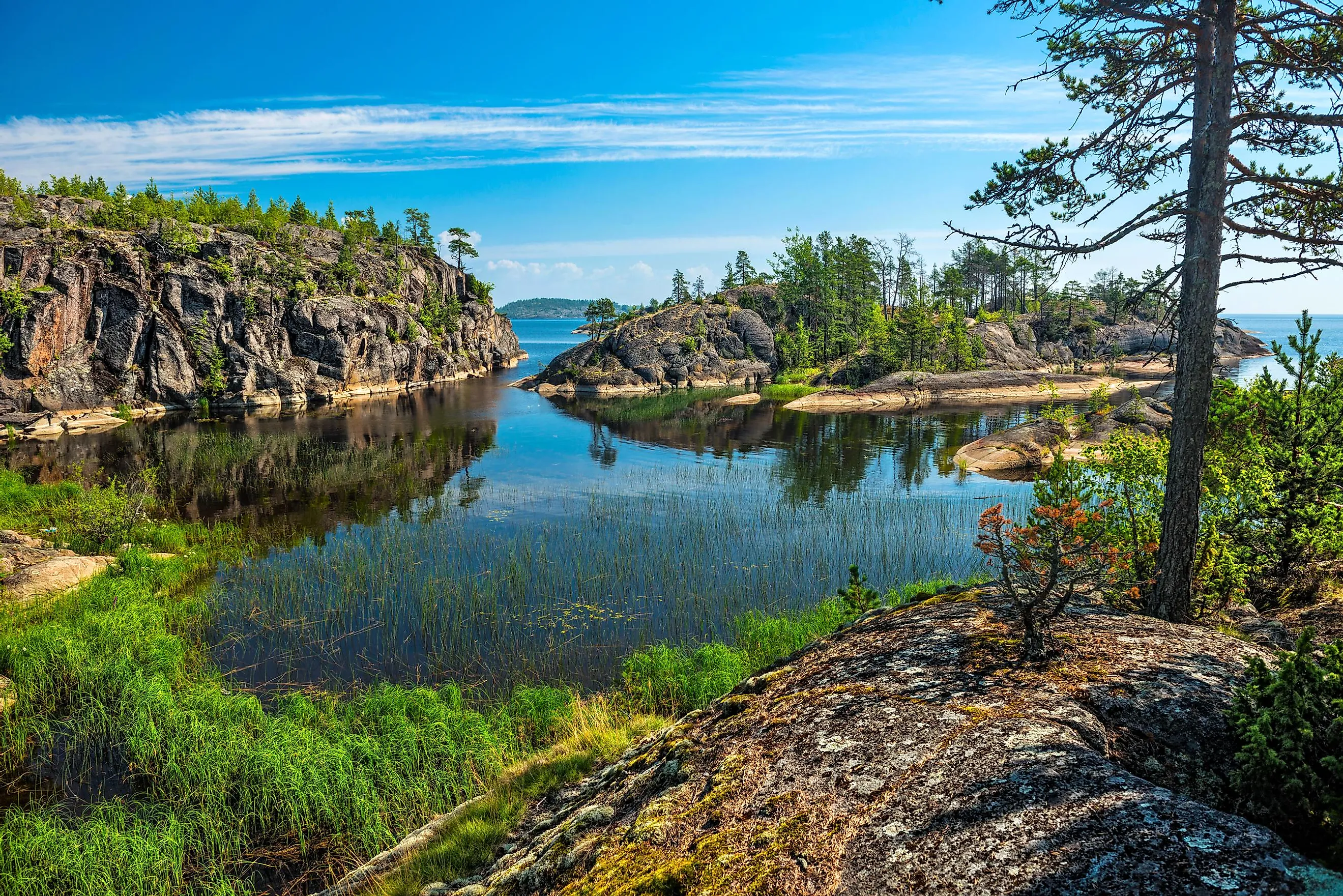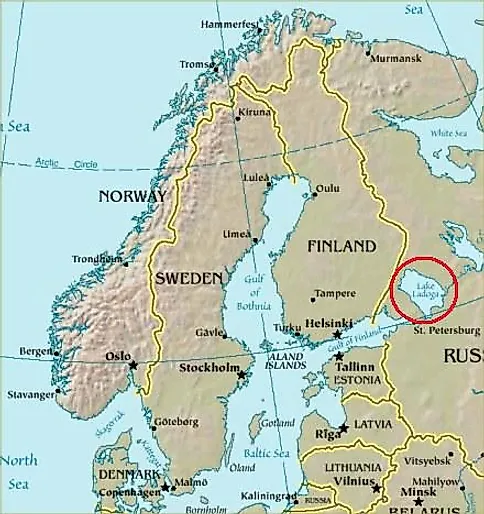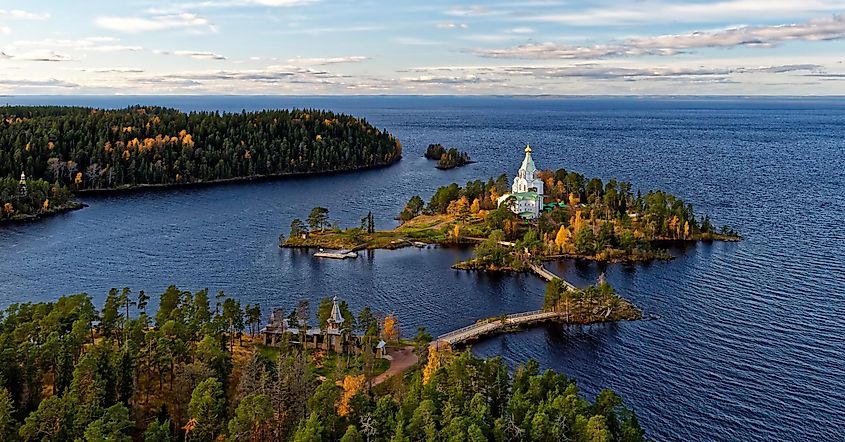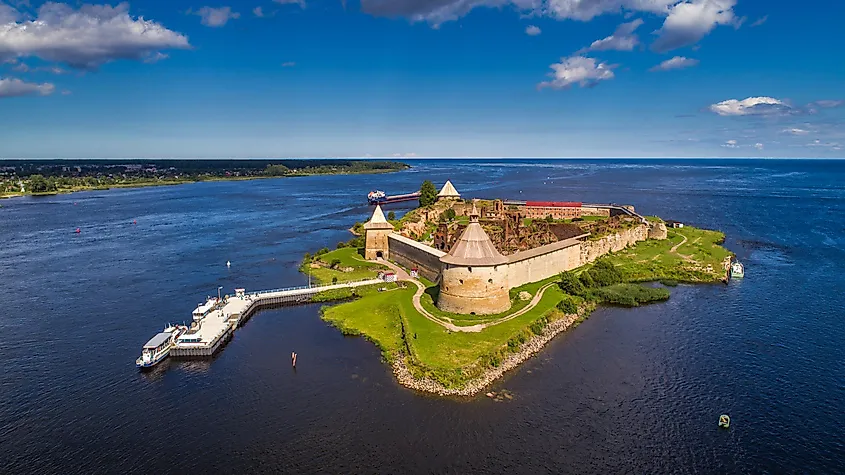
Lake Ladoga
Russia has numerous lakes, but almost 98% of them cover less than 1km2. It holds the world’s largest lake, the Caspian Sea which it shares with four other countries, and Lake Baikal, the world’s deepest lake. The Karelia region of northwestern Russia has about 60,000 lakes, including two of Europe’s largest lakes: Onego and Ladoga. Lake Ladoga is Russia’s second-largest lake located entirely within the country, after Lake Baikal. It is the world’s 14th largest freshwater lake.
Where Is Lake Ladoga?

Lake Ladoga is a large freshwater lake in northwestern Russia (European Russia). It is located in Leningrad Oblast and the Republic of Karelia, 40 km east of Saint Petersburg. Lake Ladoga is separated from Lake Onega by the town and administrative center of Olonets Karelia in the east. It is bound to the north by the Ladoga Karelia region, west by the remote Karelian Isthmus region, and southwest by Ingria region.
Geography

Lake Ladoga is Europe’s largest lake located entirely within the continent. It covers an estimated 17,600 km2 (excluding islands), larger than four US states, Kuwait, or Qatar. There are over 600 islands with a combined total area of 435 km2. Lake Ladoga is 219 km long and 83 km wide, with an average depth of 51 m. The maximum depth is 230 m at a point near Valaam Island. Lake Ladoga has a volume of 837 km3, and its basin spans 259,000 km2.
Lake Ladoga is part of the Volga-Baltic water route and is separated from the Baltic Sea by the Karelian Isthmus. It is a navigable lake whose basin includes about 3,500 rivers longer than 10 km and 50,000 other lakes. The rivers account for 85% of the inflow into the lake, while precipitation and underground sources account for 15%. The primary rivers flowing into Lake Ladoga are Vuoksi, Volkhov, and Svir. Neva River is the major outflow, draining the lake into the Gulf of Finland. The major islands include Riyekkalan-Sari, Valaam, Konevets, and Kilpola.
Marine Life
Lake Ladoga has 48 fish species, including carp bream, ruffe, roach, zander, and smelt. Atlantic sturgeon and some salmon species are rare and endangered by overfishing. There is a large Arctic char population, closely related to the chars in Lake Vattern and Lake Sommen of Sweden. The lake has an endemic ringed seal, known as the Ladoga seal, found throughout the area.
Brief History

The area surrounding Lake Ladoga has switched hands several times in history. In the Middle Ages, Lake Ladoga was a vital trade route between the Eastern Roman Empire and the Varangians. During the Swedish-Novgorodian Wars (12th and 13th centuries), the region around the lake was disputed between the Swedish and Novgorod Republic, leading to the establishment of the Oreshek and Korela fortresses along the lake’s bank. Sweden also occupied portions of the lake during the Ingrian War.
Following the Treaty of Stolbovo in 1617, Russia ceded the western and northern coast to Sweden, only to regain the territory in 1721 after the Great Northern War. From the early 19th century to the mid-20th century, Lake Ladoga was shared by Finland and Russia. When the Germans besieged Leningrad between 1941 and 1943, the lake provided the only access to the rest of the Soviet Union.
The fish in Lake Ladoga supports commercial fishing in the region. Although commercial fishing is a major industry in the region, overfishing has greatly affected the lake. Fish farming and recreational fishing are also common around the lake. Besides fishing, water transportation is also an important commercial use of Lake Ladoga.











